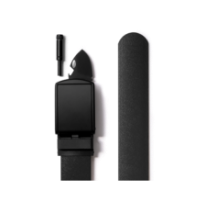How to Deal with Workplace Burnout Thu, Jul 01, 2021
As burnout has become increasingly common, it is certainly worth considering the impact of stress on the human mind and body. With nearly two-thirds of full-time workers experiencing burnout, either occasionally or frequently, organizations are undoubtedly facing an occupational phenomena.
Fortunately, there are tactics employees can use to beat burnout. When applied, these tactics can help employees to regain perspective, retain their focus, and reignite their passion for work.
But first, it is important to understand what burnout is and what it entails.
What is Burnout?
Burnout is the loss of motivation, energy, and interest regarding one’s job or career. Instigated by massive stress and overwork, burnout not only causes a mental collapse, but it can ruin an employee’s ability to work.
Signs, Symptoms, and Causes of Burnout
Notably, burnout can affect anyone at any time. Unfortunately, for many employees, it can be difficult to differentiate normal stress from burnout. For this reason, it is important to watch out for key signs and symptoms, including cynicism, reduced professional efficacy, chronic fatigue, and loss of appetite. Burnout can occur for a number of reasons, with the most common being work-life imbalances, toxic work environments, and unreasonable time constraints or expectations.
Recovering from Burnout
While taking some time off may be tempting, a vacation is not always a quick fix for burnout. Indeed, it can temporarily relieve stress. However, research has shown that the average vacation does little to improve employees’ energy and happiness levels once they have returned to work. In fact, workers’ problems and workloads are likely to persist, or worse, double!
With that being said, there are other ways to alleviate burnout, even while on the job. Below is a simple (yet effective) guide that employees can follow when dealing with burnout.
Remember to take regular breaks. This method may seem counterintuitive, however, taking small moments to unwind (e.g., taking a nap, eating a snack, stretching, or going for a walk) are important for maintaining productivity, efficiency, and motivation. Even with pending deadlines, working non-stop is a surefire way to burnout quickly.
Manage expectations (for your work and for yourself). It is always important to consider your current capabilities and priorities. If you find yourself drowning at work, try limiting the number of tasks you’ll tackle. If you cannot say “No” to a project or request, try negotiating the deadline and/or the amount of work. Remember to be transparent with your boss and colleagues about what you can and cannot fit into your schedule.
Keep a daily schedule. While adding more rules and structure to your day might seem restrictive, a time-blocked schedule actually reduces decision fatigue and feelings of overwhelm. Not only are you able to keep track of your intentions (with clear goals and priorities), but you are able to protect your time from distractions and interruptions.
The Takeaway
Admittedly, burnout is something that everyone goes through at some point in their career. While burnout can directly and negatively impact our lives, both at work and at home (especially for remote workers), it is possible to manage or reduce its effects.
By understanding what burnout is and how it happens, employees can take steps to reverse (and possibly prevent) burnout at the workplace. Ideally, this would allow employees to end the workday not only happier, but healthier too.







